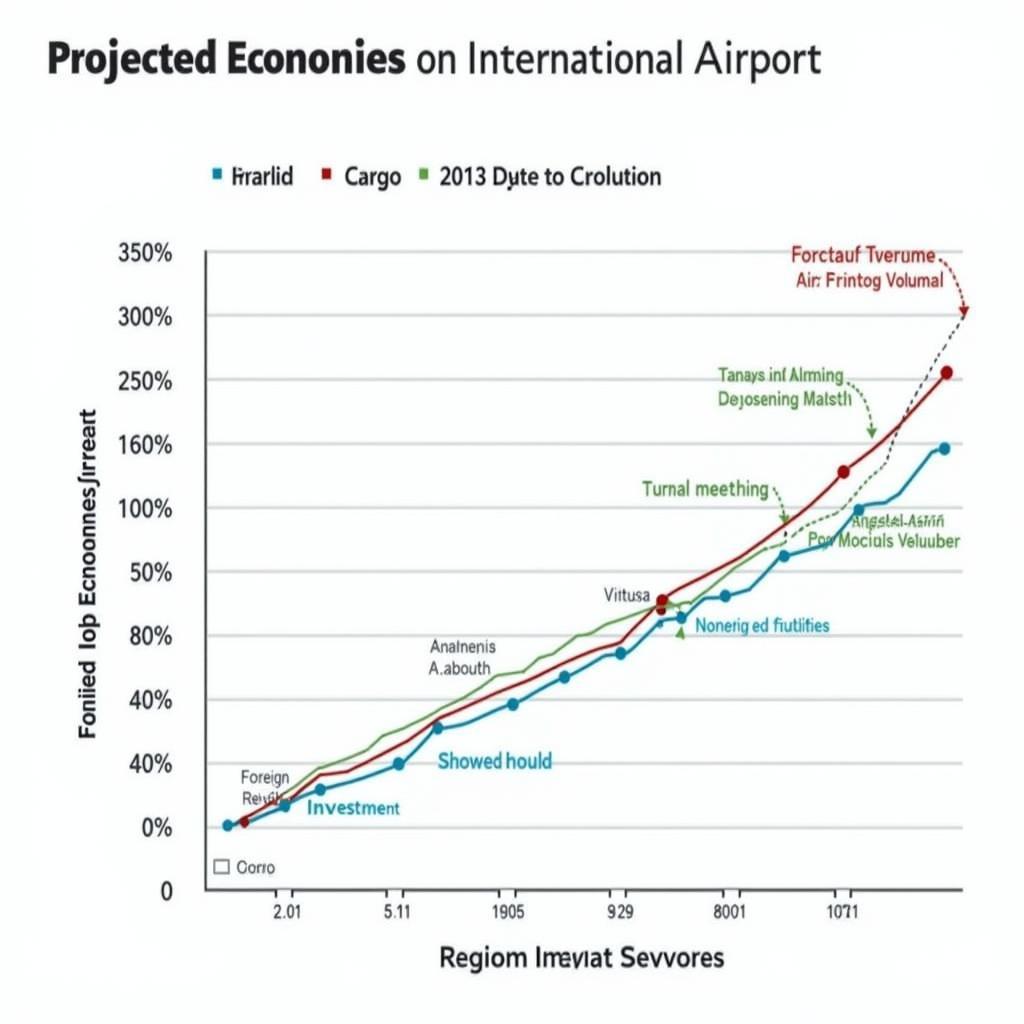Greenfield International Airports represent a new frontier in aviation, offering a blank canvas for innovation and efficiency. These airports, built from scratch on undeveloped land, are designed to address the increasing demands of air travel and incorporate the latest advancements in airport technology and sustainable practices. They offer a unique opportunity to optimize airport layout, passenger flow, and cargo handling, leading to a more seamless and efficient travel experience.
What Defines a Greenfield International Airport?
A greenfield international airport is essentially an airport built on a site where no previous airport existed. Unlike brownfield airports, which are existing airports undergoing expansion or renovation, greenfield projects allow for complete freedom in design and development. This allows for the implementation of cutting-edge technologies, integrated transportation systems, and future-proof infrastructure. They often incorporate sustainable building practices, aiming to minimize their environmental footprint. Think of it like building a house on an empty lot versus remodeling an existing one. You have complete control over the design and can build exactly what you need from the ground up. Similarly, a greenfield airport offers a clean slate to create a state-of-the-art aviation hub. For instance, the pannur airport location is an example of a proposed greenfield project.
The Advantages of Greenfield International Airports
Greenfield projects offer numerous advantages. One key benefit is the ability to optimize airport layout for maximum efficiency. This includes strategically placed runways to minimize taxi times, streamlined passenger terminals to reduce walking distances, and efficient baggage handling systems to minimize delays. These airports can also be designed to accommodate future growth, ensuring they can handle increasing passenger volumes and larger aircraft. Furthermore, they can be integrated with other modes of transportation, such as high-speed rail and bus networks, creating seamless intermodal connectivity. The kuppam airport also presents a similar opportunity for optimized development.
Economic Benefits of Greenfield Airports
Greenfield international airports can act as significant economic catalysts, stimulating job creation and regional development. The construction phase itself generates numerous employment opportunities. Once operational, the airport attracts businesses, tourism, and foreign investment, contributing to the local economy. They can also serve as hubs for logistics and cargo operations, facilitating international trade and boosting economic growth.
 Greenfield Airport Economic Impact: Chart depicting the positive economic effects of a greenfield airport project.
Greenfield Airport Economic Impact: Chart depicting the positive economic effects of a greenfield airport project.
Challenges in Developing Greenfield International Airports
While greenfield airports offer many benefits, they also present challenges. Securing funding for such large-scale projects can be a major hurdle. Environmental impact assessments are crucial and can be complex, requiring careful consideration of the surrounding ecosystem. Land acquisition and community engagement are also essential aspects of the development process. Managing these challenges effectively is critical to the success of any greenfield airport project. Understanding the greenfield airport meaning is fundamental to navigating these complexities.
Navigating Regulatory Hurdles
Navigating the complex regulatory landscape can be another significant challenge. Obtaining the necessary permits and approvals from various government agencies can be a time-consuming and intricate process. Compliance with international aviation standards and safety regulations is also paramount.
Examples of Successful Greenfield International Airports
Several successful greenfield international airports serve as examples of best practices. These airports demonstrate the potential of greenfield development to create world-class aviation hubs. Knowing the chennai airport location can provide context for the importance of strategic placement.
 Greenfield Airport Passenger Terminal: Modern and spacious passenger terminal with ample natural light.
Greenfield Airport Passenger Terminal: Modern and spacious passenger terminal with ample natural light.
What is the future of greenfield international airports?
Greenfield international airports are likely to play an increasingly important role in the future of aviation. As air travel demand continues to grow, these airports offer a solution to capacity constraints and allow for the implementation of innovative technologies. They also provide an opportunity to create more sustainable and environmentally friendly airports, which is becoming increasingly important in the face of climate change. The rajkot international airport name exemplifies the trend of modernizing aviation infrastructure.
Conclusion
Greenfield international airports offer a unique opportunity to reshape the aviation landscape. By embracing innovation and sustainability, these airports can enhance the passenger experience, drive economic growth, and pave the way for a more efficient and environmentally responsible future of air travel.
FAQ
- What are the key advantages of a greenfield airport?
- Optimized layout, future-proof infrastructure, and integration with other transport modes.
- What are the main challenges in developing a greenfield airport?
- Funding, environmental impact, land acquisition, and regulatory hurdles.
- Why are greenfield airports important for the future of aviation?
- Addressing increasing demand, implementing new technologies, and promoting sustainability.
- What is the difference between a greenfield and a brownfield airport?
- Greenfield airports are built from scratch, while brownfield airports are existing airports undergoing expansion or renovation.
- How do greenfield airports contribute to economic development?
- Job creation, attracting businesses and tourism, and facilitating international trade.
- What are some examples of successful greenfield airports?
- Several international airports demonstrate the potential of this development model.
- What role does sustainability play in greenfield airport development?
- Greenfield airports offer a chance to incorporate environmentally friendly design and practices.
If you need further assistance, please contact us at Phone Number: +13089626264, Email: [email protected] or visit us at 404 Bothwell St, Oxford, NE 68967, USA. We have a 24/7 customer service team.

